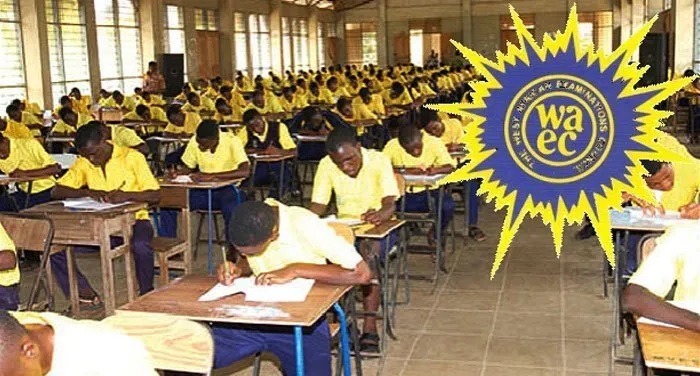[ad_1]
But Mr Matawalle could only manage to stay in power for one term. After defecting from the PDP, he faced the 2023 election as the APC candidate but was defeated in the 18 March governorship election by the PDP candidate, Dauda Lawal.
During the campaign before the 2019 election, Mr Matawalle promised to fight unemployment and poverty and revamp the education and health sectors.

Poverty rate, internal revenue and debt management
Mr Matawalle spoke passionately about fighting poverty during his campaign, which he said was spurred by insecurity in the state. In 2019 when he was sworn in, Zamfara State was worse than the national average “poverty headcount rate” as 73.98 per cent of the state’s population was considered poor while the national average was 40.1 per cent. The state had a higher percentage of poor people than Sokoto, Taraba, Jigawa, Ebonyi and Adamawa states, according to a report by the Statista.
The multidimensional poverty index released in November 2022 stated that 78 per cent of Zamfara people are poor, meaning poverty worsened under Mr Matawalle, from 74 to 78 per cent.
Mr Matawalle also performed poorly in debt management In 2019, data showed the state had a combined domestic and external debt of N103.35 billion. The debt rose to N130.1 billion in 2020 and N130.94 billion in 2021. The state currently has the second-highest debt in the North-west region and occupies the 15th out of the 36 states of the federation.

However, from 2019 to 2021, the state witnessed an increase in its internal revenue generation (IGR), In 2018, it generated N8.21 billion, while in 2019 when Mr Matawalle took over, the state generated N15.42 billion. By 2021, the last year the data was provided, Mr Matawalle’s administration had increased the internal revenue to N18.50 billion, according to NBS data.
Unemployment
While Mr Matawalle failed to improve the general economic situation of the state by failing to fight poverty, available data shows a slight improvement in the employment data of the state from 2019. In 2018, the state had an unemployment rate of 17.98 per cent while the latest NBS data shows that the rate has fallen to 12.99 per cent.
As part of its job creation efforts, the state government said it employed over 6,000 civil servants between 2019 and 2022, including 556 teachers and other health workers. The state chairperson of the Nigerian Labour Congress (NLC), Sani Halliru, told PREMIUM TIMES that the incumbent governor fulfilled his promise of providing jobs.
Education
After he was sworn in in 2019, Mr Matawalle promised to revamp the education and health sectors of the state as he announced free healthcare for women and children of the state.
“We are aware that poor education, poverty, and unemployment are the causes of criminal activities and I want to plead with members of the public that
within the next few weeks, we will come up with practical ways of handling these starting with free education and scholarships,” Mr Matawalle said.

However, a study by UNESCO revealed that Zamfara State under Mr Matawalle did not make significant efforts in rolling back the out-of-school children menace. The UNESCO data released in 2023 shows the state’s percentage of out-of-school children rose from 41.1 per cent in 2018 to 61.4 per cent in 2022. The state was named among the 22 states with an alarming rate of out-of-school children in the country. In 2020, Zamfara had 422,214 out-of-school children, according to the Universal Basic Education Commission (UBEC) but that number has now risen to 883,953 in 2022.

To be fair to Mr Matawalle, widespread insecurity contributed to many parents withdrawing their kids from school, especially in rural communities.
Piling debts have led examination bodies in the country, especially the West Africa Examination Council, to bar pupils from the state from participating in the 2022 examinations while the National Examination Council (NECO) withheld Zamfara State pupils’ results for 2020 over the debts. NECO, in 2020, said Zamfara topped the list of states owing the body. While the overall N3.5 billion debt did not start during his administration, Mr Matawalle failed in his promise to revamp the education sector by not settling them.

Also, the West Africa Secondary School Certificate Examination (WASSCE) statistics showed that students in Zamfara had mixed performances in its public examinations. In 2019, only 22.22 per cent of students who wrote the examinations passed. In 2020, the state recorded an increase in pass rate to 44.05 per cent but it nosedived to 9.15 per cent in 2021. Public school pupils could not participate in the examinations in 2022 due to the debt.
Health
Mr Matawalle named the health sector one of the priority areas of his administration. But data indicated that the state made little progress in the sector under the administration. For instance, in 2019, the Maternal, Newborn and Child Health Programme said Zamfara had 300 medical doctors. The Matawalle administration increased the number to 350 in 2022. Even at that, the state falls short of the World Health Organization (WHO) requirement of one doctor to 1,000 patients.

In 2021, the state chairman of the Nigeria Medical Association (NMA), Mannir Bature, lamented the concentration of health workers in the state capital as well as the general decay of hospitals in the state.
“The level of decay is disheartening. Only the General Hospital in Gusau has the facilities required for a decent health facility. In the remaining
13 local government areas, General Hospitals don’t even have facilities for neonatal care….. 78% of the human resources in the health sector is
concentrated in Gusau, leaving just 22% to be shared amongst the remaining 13 local government areas,” he said
Mr Matawalle also performed poorly in tackling infant and maternal mortalities in the state. In 2018, months before he took over, the child mortality rate stood at 130 deaths per 1,000 live births. The national average is 62 deaths. The rate increased to 136 deaths per 1,000 births in 2021, according to the Multiple Indicator Cluster Survey of the NBS.
Despite most of the development indices getting worse during his tenure, some residents of the state believe Mr Matawalle stole billions of naira meant to develop the state, a matter currently being investigated by the anti-graft agency, EFCC, although the governor has denied any wrongdoing.
Support PREMIUM TIMES’ journalism of integrity and credibility
Good journalism costs a lot of money. Yet only good journalism can ensure the possibility of a good society, an accountable democracy, and a transparent government.
For continued free access to the best investigative journalism in the country we ask you to consider making a modest support to this noble endeavour.
By contributing to PREMIUM TIMES, you are helping to sustain a journalism of relevance and ensuring it remains free and available to all.
Donate
TEXT AD: Call Willie – +2348098788999
[ad_2]
Source link







